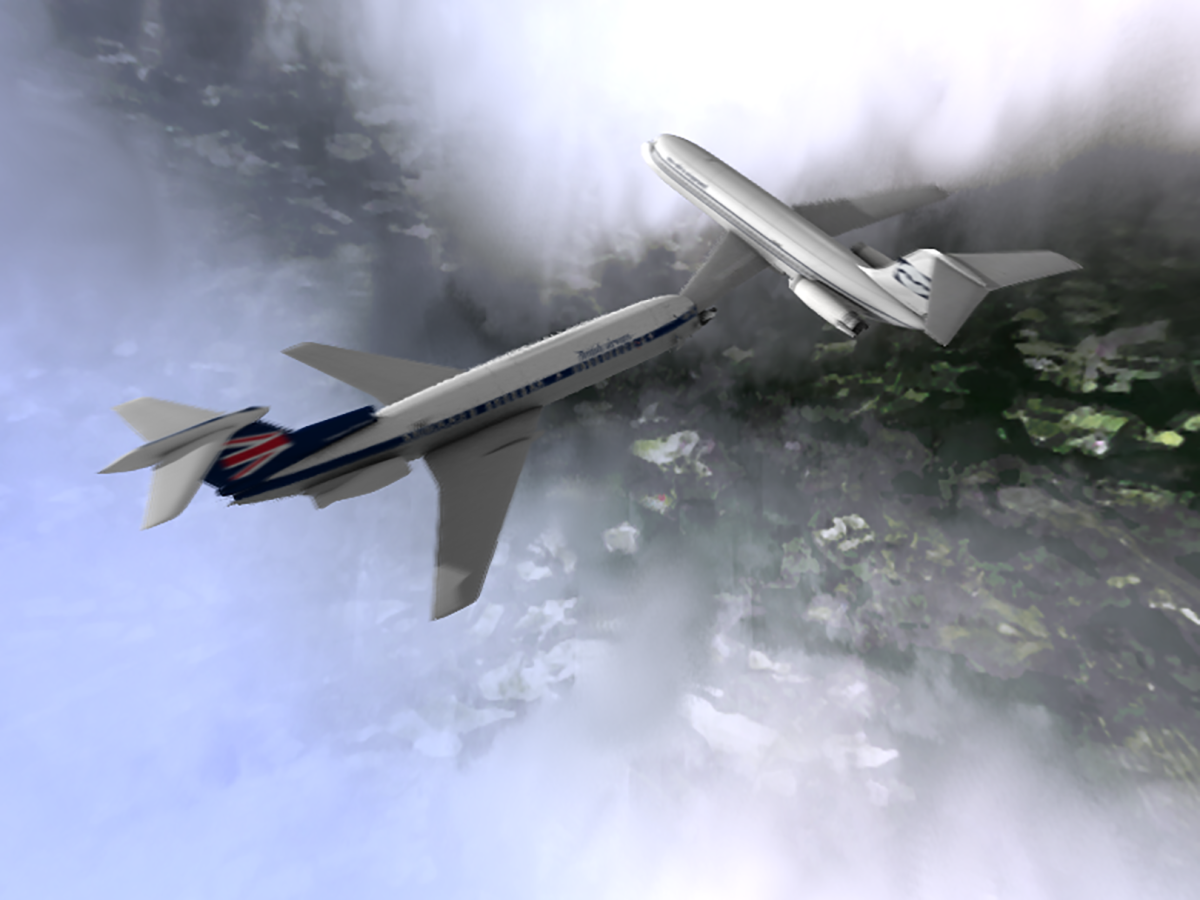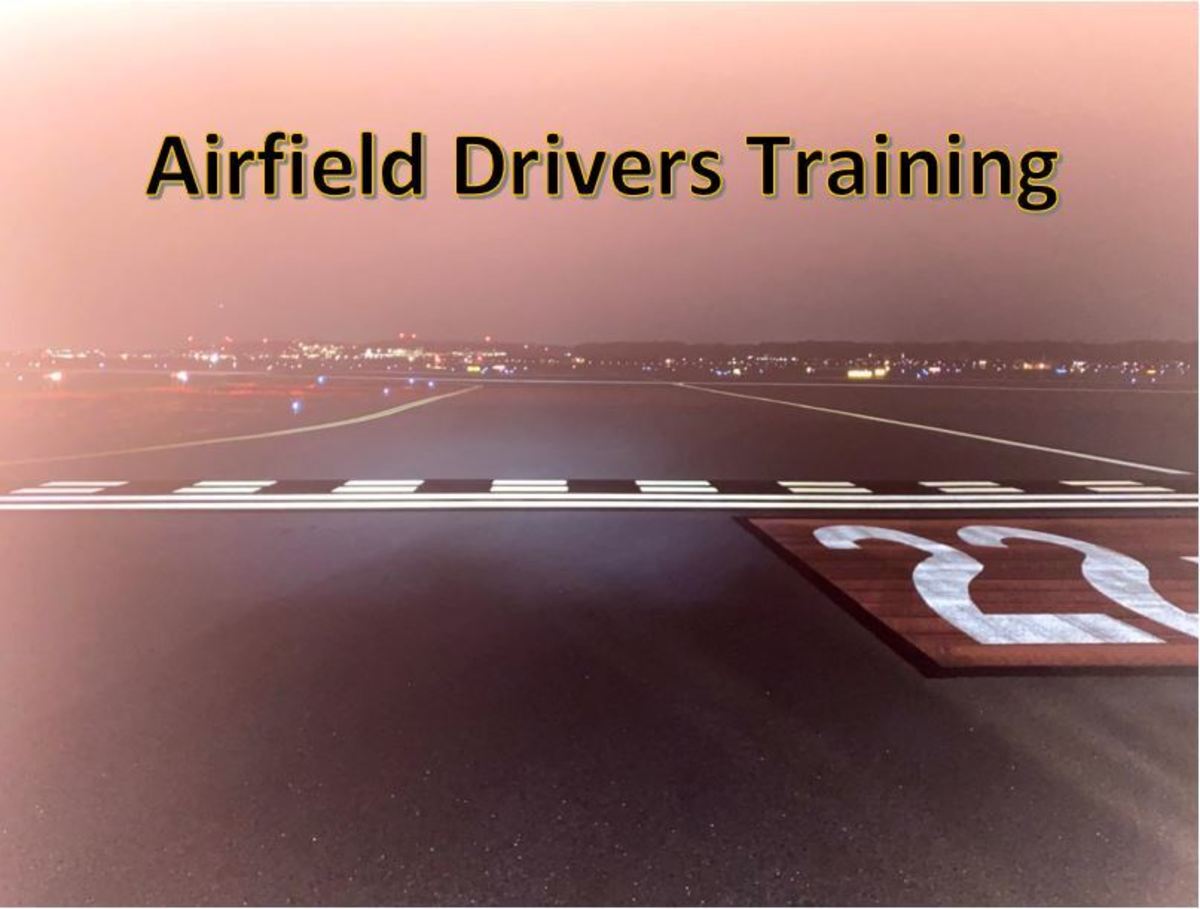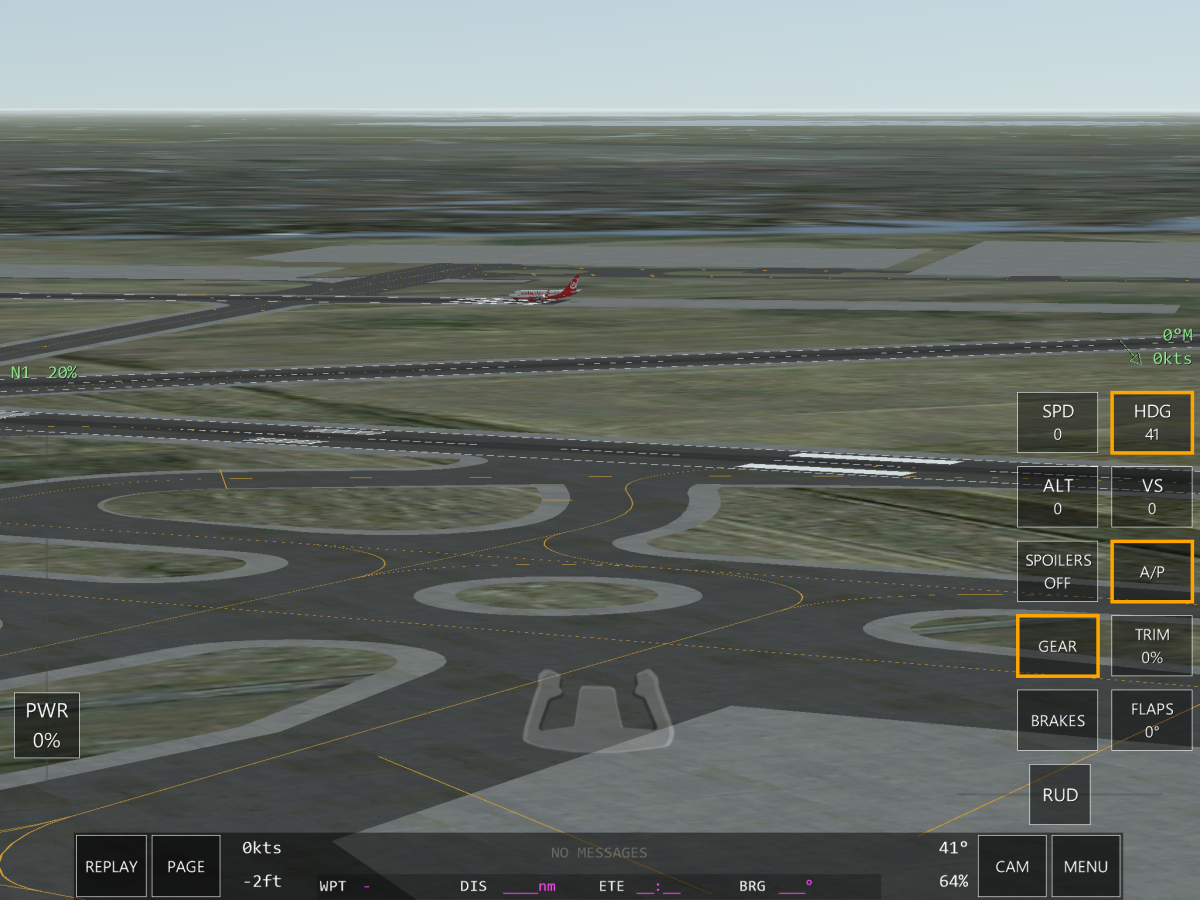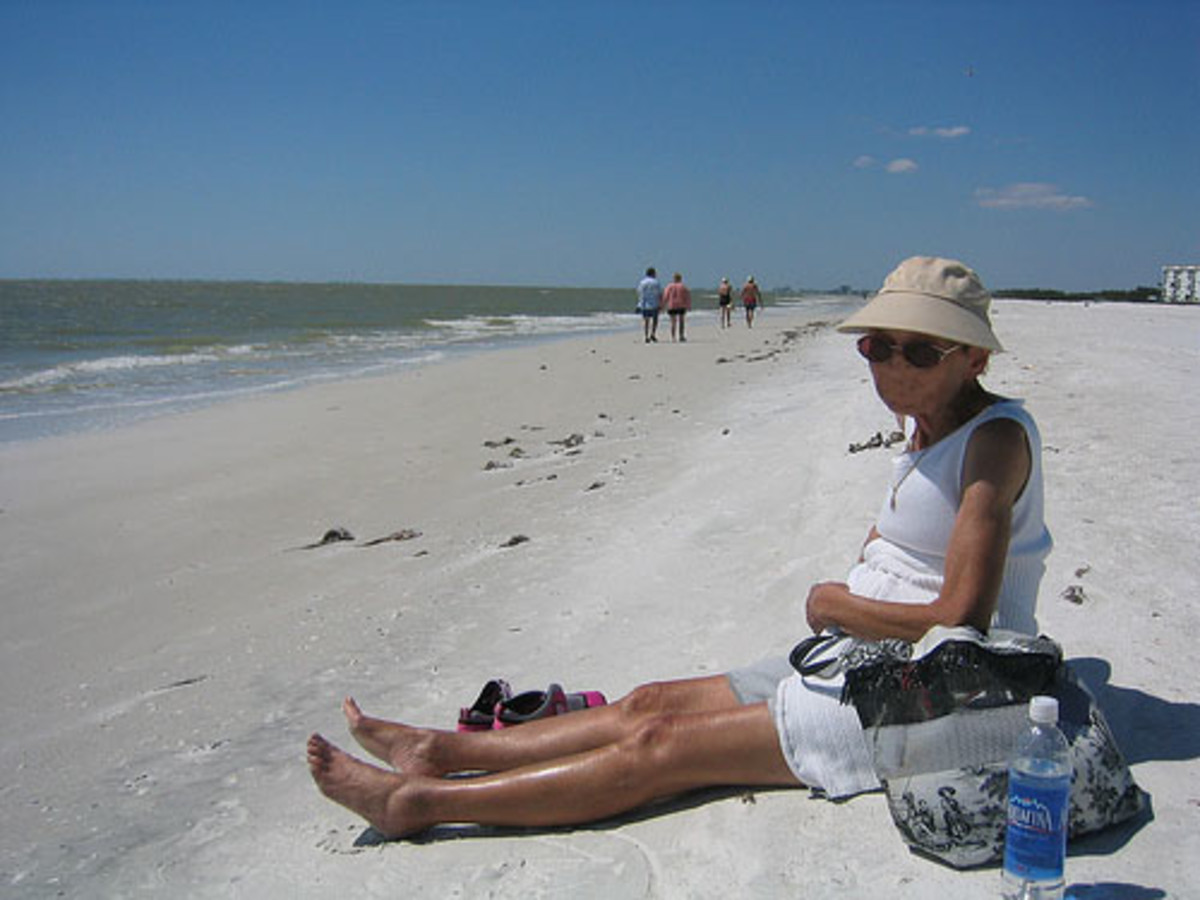Rapid Descent!
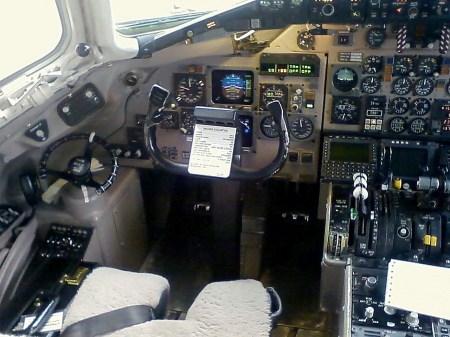
By: Wayne Brown
“FirstAir 244, DFW Air Traffic Control, you are cleared to your cruise altitude of Flight Level 33.0. Squawk 3040 and ident for enroute handoff.”
“FirstAir 244, is ident on 3040 and climbing for FL 33.0, DFW” came the quick radio response.
“FirstAir 244, contact air traffic control now on 136.75 and have a good day”
“136.75, and a good day to you sir, FirstAir 244!”
“Captain Stevens, would you and Joe care for some coffee?” The voice was that of Sandi Jenkins, our head flight attendant for this flight leg between Dallas-Fort Worth and Atlanta Hartsfield. Sandi waited patiently for a reply knowing what the answer would be but knowing that we would game her on it a bit.
“Let’s see Joe, what do you suppose ol’ Chuck Stevens would want in his coffee this trip? I said leaning back in my seat a bit and looking over at Joe Carter the copilot who had just finished the radio handoff with air traffic control. I smiled back toward Sandi at the same time.
Before Joe or I could say anything else, Sandi laughed and said, “It’s black for both of you, I am saving the condiments for the passengers.” Then she laughed and quickly closed the cockpit door before either of us could speak. Joe and I both laughed. Soon Sandi was back with the hot black coffee for both of us.
“Sandi, we’re just passing ten thousand feet but I am going to leave the seat belt light on for a while. There is some weather up ahead here in a few minutes that we will be climbing through that could get a bit rough. I want you to keep the folks down and in the seats with the belts on. I promise you that I will get them up just as soon as we can clear this weather. Things look pretty good once we hit the Louisiana border.”
Sandi nodded her understanding and secured the cockpit door once again.
It was routine leg on my monthly schedule…one I have flown so many times that I could fly it in my sleep. I often wondered if there were grooves worn in the sky from airplanes transiting the air routes between Dallas and Atlanta. I had flown as a Captain on the MD-80 twin-engine jet airliner since it had entered service in the late 80’s. At that time, it was one sleek machine with a measured fuel efficiency over the 3-engine 727’s which populated the industry. I had grown up in the 727 and loved it but after making the transition to the MD-80, I soon realized that it too was a pilot’s aircraft and not just an electronic instrument panel. Now as I neared the end of my flying career, I was glad to be finishing it out in this aircraft and not enslaved to the glass cockpit of the newer models.
As we continued our climb through FL 180, I sipped my coffee and glanced in my co-pilot Joe Carter’s direction. I had flown with Joe since he entered into the MD-80 as a young co-pilot. Now he had tons of experience and was in-line for upgrade to the Captain’s seat. He would be a fine captain with a great pilot’s background, knowledge, the mental capability and adaptability to transition to the glass cockpits. Joe was a man of few words and he took his job seriously. We had flown together so much that we almost communicated without talking in-flight. Joe was one of those people who made you proud that you were part of this profession.
I glanced at my airway chart and checked the navigation aids. We were just sixty miles east of DFW and climbing through FL 200 now. We had entered a cloud deck at 9,000 ft and we were now coming up on the back side of the frontal system moving west to east across the southern states. The air was getting rougher and the 80 began to pitch and roll a bit with the turbulence. I made a couple of course adjustments with the autopilot to avoid a couple of small build ups embedded in the system. I throttle back to penetration speed just in case we encounter unexpected turbulence off of one of the cells that was not showing up on the radar. Joe continued working the radios, giving responses and keeping the navigation system updated. The ride was starting to get rough even for a couple of high timers like Joe and I.
“Everybody down, seat belts fastened, assume a head down position, quickly!” suddenly blasted out over the cabin intercom system. I recognized Sandi’s voice. Joe and I quickly looked at each other in surprise and then looked back at the instrument panel confused as to why Sandi would make such a call during the climb. The answer was not long in coming as suddenly there was a blast that sounded behind us and the cockpit quickly fogged up. I immediately recognized that we had just suffered a rapid decompression and lost cabin atmosphere. I grabbed for my oxygen mask resting on the hook beside my seat. Joe Carter quickly donned his as well. The aircraft had yawed heavily to the right with the force of the blast indicating the compression release was probably to the left side of the fuselage. Joe initiated the emergency checklist. There was no time to sit and think about what had happened.
I tripped the flight director and took manual control of the aircraft. I pushed the nose downward into a dive in order to start losing altitude as quickly as possible. I directed Joe to trip the switch on the oxygen mask drop for the passenger cabin. The aircraft pushed back as I pushed the nose over. With the momentum and speed that it carried, it desired to continue in its current path. I rolled in some additional trim to coax it more deeply into the dive. We had to get below 13,000 feet and fast. For a moment , it was like the plane was asking me if I wanted it to quit flying and just fall out of the sky. I guess that was kind of the idea although we had to be careful that we did not become a rock in this process and fall right out of the sky. Once I was down to altitude, I still very much needed a flying machine under me.
We were totally under instrument conditions weather-wise as I descended the aircraft. The turbulence buffeted us back and forth and I prayed that I could keep the ship together as I pushed the sink rate deeper and more rapid. If we had suffered significant structural damage during the decompression the old bird might not be up to specs for a full out descent. I had to take that risk otherwise we could kill a lot of people in the back. It was a gamble but the best gamble that we had at the present. God help us that we did not hit a thunderstorm in this descent. I glanced at the radar and it was totally blacked out.
“Joe, broadcast on our last frequency and on emergency that we are declaring an emergency and are in a rapid descent to 10,000. Repeat it a couple of times. If you get a response, let them know that we will probably break 10,000 if we cannot get visual or clear the weather at that altitude. Also, tune Tyler VOR on the navigation radio, if my calculations are right, we have to be close to that airport. I need you on the controls with me when we start pulling out of this dive. Keep an eye on the airspeed and don’t let me overrun it.” Joe nodded his understanding and went to work. I attempted another contact with the cabin but got nothing on the intercom. For all I knew at the present, Joe and I might be the only ones alive on this aircraft at the moment.
Lightning blazed off to my left and I instinctively rolled the aircraft to the right and tapped the rudder to slide her away from a possible storm. We were now hitting bands of wind sheer associated with the front which was tossing the MD-80 about in the air. I could only imagine how terrifying things must be in the back if anyone was alive back there to witness it. We had no real choice, comfort and security would have to take a temporary backseat to survival and I was attempting to save us all the best way that my training and experience could provide. I found myself praying that it would be enough…and soon enough.
Passing 13,000 fleet, we continued the deep dive to 10,000. I nodded for Joe to get on the controls with me and we began to pull back on the yoke firmly as I added upward trim attempting to break the dive before we busted through 10,000 feet. The aircraft had now changed its mind and seemed to have become comfortable in the deep dive. It resisted our coaxing at first wanting to continue making like a rock instead of flying. Finally, we broke spell and the old gal began once again to behave like an aircraft. I leveled her out at 10,000 fleet holding an airspeed of 300 knots on the meter. We were finally back down into an atmosphere that would sustain life with supplemental oxygen. Both Joe and I tossed off the mask and readied ourselves to get this bird on the ground somewhere.
“That’s Tyler on the VOR there, Sir” Joe signaled and pointed to the instrument. We were northwest of the airport about ten miles out. We were still in the weather and the air was still bumpy.
“Okay, you get on the radio and see who you can raise, I am going to take us down to 5,000 and try to set up for an approach to the Tyler Airport,” I said. Joe nodded and went to work. I dropped the nose over once again and began a slower descent to 5,000. I grabbed the lever and threw up the boards to slow our descent. The air brakes on each wing immediately bit into the air causing the aircraft to pitch and reel a bit as it abruptly began to slow. I wanted to something below 250 knots for the time being until I could get a runway direction, a local altimeter, and some wind direction and speed.
“May day! May day! FirstAir 244 is in emergency descent from 10,000 feet down to 5,000 feet. We have suffered a decompression and require an emergency landing at the nearest suitable airport for an MD-80 aircraft. We have 127 passengers and a crew of five on board currently with 20,000 lbs of fuel remaining,” Joe broadcast over the emergency frequency as I continued our descent.
“FirstAir 244, Tyler Approach, say your current position,” came the immediate reply from the radio.
“FirstAir 244, is descending through 7,000 feet, on a heading of 150 degrees, approximately six miles west northwest of the Tyler VOR currently squawking emergency,” Joe replied.
“FirstAir 244, radar contact, turn left heading 120 degrees, maintain 5,000 feet, to intercept a downwind leg for a short approach to Tyler Airport runway 300. Can you accept a visual approach, 244, if so I will have to take you further downwind for the intercept?”
“Roger, 244 just coming level at 5,000 feet and we are now in partial visual conditions with the cloud deck base just below us. We would rather have the visual short approach if possible, Tyler” Joe shot back as I nodded my agreement.
“FirstAir 244, I understand, continue your heading and descend to 3,000 feet. You should be in clear visual conditions by that altitude. If so, you are cleared for a visual approach to runway 300 at your discretion. Altimeter in 29.81. Airfield elevation is 610 feet MSL. Winds are 310 at 14 knots”
“Roger Tyler, 244 is leveling at 3,000 and in VFR conditions. We have slowed to pattern speed and are now initiating our turn for approach to runway 300 with numbers,” Joe replied.
“FirstAir 244, are you declaring an emergency? Tyler Approach queried.
“That’s affirmative, Tyler…127 paxs, five crew, and 18,000 on the fuel at present,” Joe replied.
“The tower has been notified, 244. Now contact Tyler Tower on this frequency,” Tyler Approach directed.
“Tyler tower, FirstAir 244 is turning inbound for emergency approach to runway 300 requesting permission to land” Joe broadcast as I settled the aircraft into a visual descent toward the runway threshold.
“FirstAir 244, emergency equipment is standing by and we have your numbers. Continue your approach, cleared to land runway 300. Altimeter 29.81, winds 310 at 14 gusts to 16.
“FirstAir 244, roger,” replied Joe
“Okay Joe,” I directed, “I have the flaps and leading edge slats set for the approach. The speed brakes are on manual. Let’s get the before land checks cleared and finish off that checklist by lowering the gear. The runway is a tad short so I am going to aim her at the numbers rather than the normal threshold to gain a little concrete. When I put the nose gear on the ground, let’s make sure we are solid and running true, back me up on the engine check; if we are good, I’ll go to reverse on both engines and you execute the air brakes, then we’ll both get on the binders and get her stopped. If we lose an engine, hold me up on the reverse, throw up the boards, and let’s get on the binders. Hopefully we’ll get her stopped before the concrete runs out, “ I added. Joe nodded his understanding and agreement.
The winds were just to the right of the nose and pushing just slightly left, not a huge concern. I added a little airspeed factor for the headwind component and steadied the controls. I didn’t want to come in too high and then burn up precious concrete trying to get to touchdown. I would rather gamble on being a tad short than long today. Not knowing the extent of our structural damage, I didn’t want to subject the aircraft to a go around if I could prevent it.
We seemed to come down the approach almost in a slow motion movement as if we were literally stuck in the sky. It is always that way in an emergency. As much as I loved to fly, when things like this occurred, the old human instinct was to get both feet on the ground and do it as quickly as was sanely possible. Although I had been in my share of emergencies, I had to manage my emotion and my patience today while keeping my focus on the task at hand…making the damn best landing I have ever made in this aircraft type.
Finally the long dream came to a suddenly end as the aircraft perched over the overrun of the approach end of the runway and I began the flaring process to pose her for the landing. As I slowly raised the nose the airspeed bled off and the aircraft entered a slow controlled stall just as the main gear tires brushed against the numbered concrete surface with a rumble and a screech. I slowly lowered nose gear and centered the aircraft on the runway with the rudders. Glancing at the instruments, we had two in the green and I gave Joe the nod as I reversed the engines. He released the air brakes and we both got on the binders to slow as the fire-rescue trucks chased us to the other end of the runway.
We slowed in sufficient time to take the last runway taxiway to the ramp. Joe began to clean up the aircraft systems as I taxied the bird. Sandi Jenkins suddenly yanked open the cockpit door and stuck her head in looking quite distressed.
“We’re okay back here. We managed to all get buckled in before the damage occurred. We lost part of the cabin wall near the wing base, Chuck. It’s blown out half way up through the roof. I heard the metal creaking and popping before hand and played a hunch…it turned out to be the right one. We are already treating some of the passengers back here for some frostbite. There are some injuries, but no one died, Thank God ! No one died! Sandi stated excitedly. I nodded my understanding keeping my eyes on the emergency equipment moving out in front of us now. They were signaling me to shut it down on a remote portion of the ramp…a precaution always taken to avoid endangering the terminal area. I acknowledged and brought the aircraft to a stop and locked the brakes. Joe completed the engine shut down checklist.
Joe and I sat silently in our seats for a moment looking out at the welcomed concrete. It was a ritual one takes advantage of after an emergency such that we had experienced.
“Joe, you and I need to say a prayer and we need to say it often after this,” I said looking in Joe’s direction.
“You mean pray that this never happens again Chuck?” Joe replied.
“No Joe…that’s too much to ask for. We need to pray that when this does happen again there are other flight attendants out there like Sandi Jenkins who are capable of saving the lives she saved today. And, we need to pray there are some good pilots up there with her who can help her out just like we did. We need to pray for that every day,” I said.
“You can bet that I will, Chuck…in fact, you can count on it,” Joe replied with a nervous laugh.
Large drops of rain began to fall against the windscreen as the frontal system we had just punched through arrived at the Tyler Airport.
© Copyright WBrown2011. All Rights Reserved.
<script type="text/javascript">
var _gaq = _gaq || [];
_gaq.push(['_setAccount', 'UA-30482128-1']);
_gaq.push(['_trackPageview']);
(function() {
var ga = document.createElement('script'); ga.type = 'text/javascript'; ga.async = true;
ga.src = ('https:' == document.location.protocol ? 'https://ssl' : 'http://www') + '.google-analytics.com/ga.js';
var s = document.getElementsByTagName('script')[0]; s.parentNode.insertBefore(ga, s);
})();
</script>
